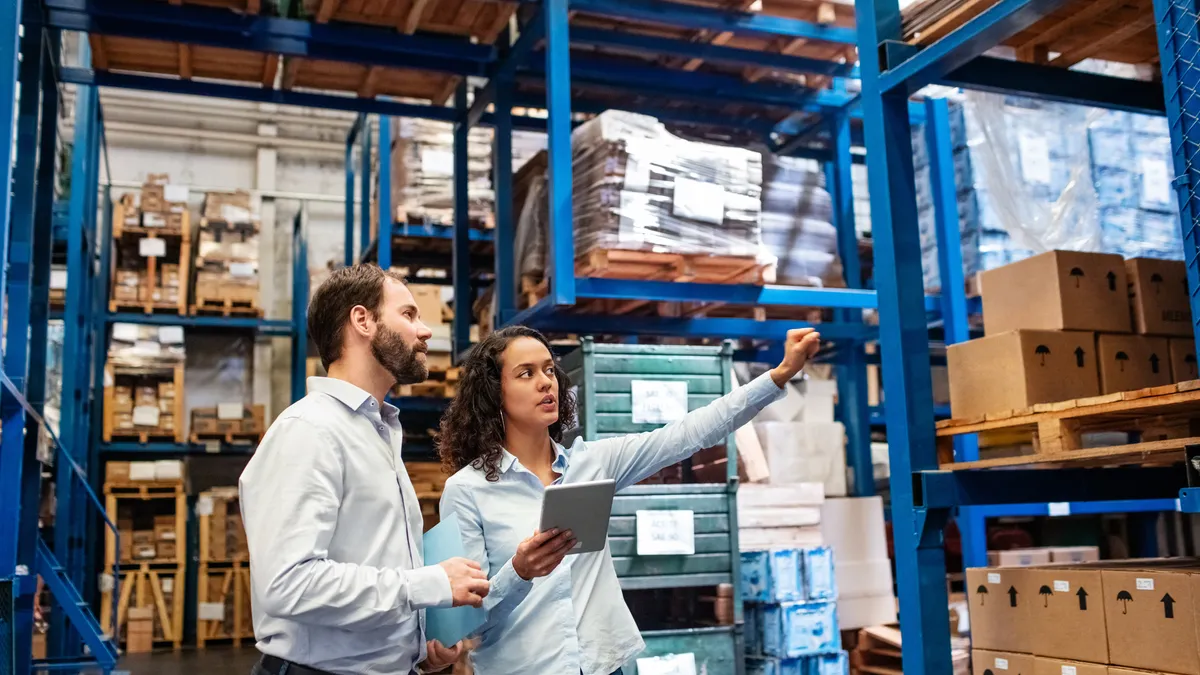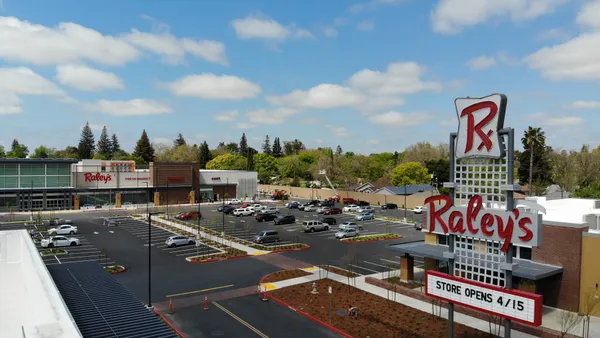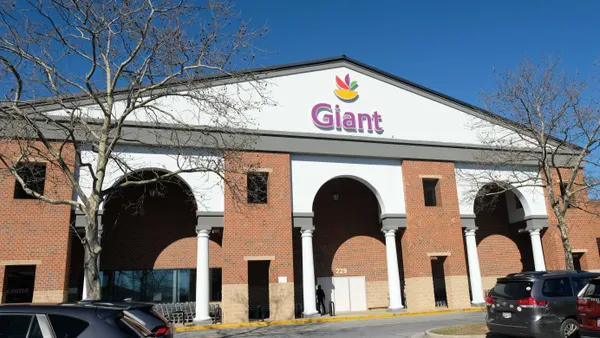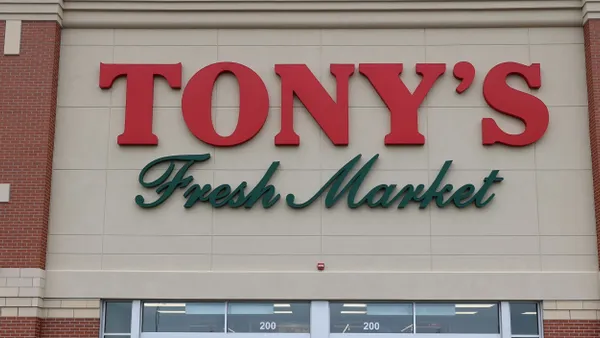Supply chain disruptions remain one of the biggest obstacles grocery retailers and their suppliers face in 2022.
While many of the challenges that plagued suppliers early on in the pandemic, such as plant closures that coincided with unexpected spikes in consumer demand, have been resolved, others are expected to linger into 2023. Ongoing freight delays, the tight labor market, and raw material shortages continue to plague manufacturers in nearly all industries around the world.
Meanwhile, consumer demand for grocery products, while down from the levels of early 2020, remains strong. Through the first half of 2022, grocery sales in the United States were up 10.8% year-over-year, according to the Mastercard Spending Pulse.
The net result is that grocery operators and their customers are having to cope with more empty spaces on shelves. According to FMI — The Food Industry Association’s 2022 U.S. Grocery Shopper Trends report, 45% of consumers said they are concerned about out-of-stock items, as many of their favorite products are often unavailable.
Together these factors have created a new environment for grocery retailing. The industry has shifted from striving for a “just-in-time” system for the delivery of products and ingredients, in which inventories are kept lean, to instead focusing on creating “just in case” inventory so that they are better prepared for future disruptions, said Ron Cardey, senior VP, customer engagement, Kwik Lok, citing a recent conversation with a strategic bakery customer.
“They have more inventory costs in their business today than ever before, as do we, and they're doing that in the event that there might be an unforeseen delay somewhere in the whole supply chain,” he said.
Both suppliers and retailers have also streamlined their product variety, eliminating unproductive SKUs to focus their resources on producing and stocking their best-selling products. They have also sought to diversify their supply chains, sourcing products and raw materials from multiple suppliers to incorporate more redundancy and protect against outages.
While building inventory levels may be a viable hedge against supply shortfalls of shelf-stable products, it is not a solution for perishable items, such as those offered in grocers’ bakery and produce departments. Suppliers of those products have faced challenges of their own, including the impact of severe weather around the world and the war in Ukraine, which has pressured supplies of wheat, fertilizer and other inputs that bakers and growers depend on.
The packaging industry, a key partner for suppliers across all grocery categories, has not been immune to the world’s supply chain challenges. Packaging supply has been burdened by the increase in e-commerce during the pandemic, adverse weather, and the ongoing shift toward the use of sustainable materials in packaging.
“It’s almost like the perfect storm,” John Blake, senior director analyst with the Gartner Supply Chain practice, told Supply Chain Dive earlier this year.
“Companies that supply the bakery and produce industries with packaging have deployed many of the same strategies that other suppliers have, including increasing purchases of raw materials and diversifying sourcing,” said Maggie Brown, director of global supply chain for Kwik Lok, a supplier of packaging solutions for a range of industries.
“Kwik Lok,” she said, “has focused on creativity and innovation to mitigate supply chain challenges and enable the ongoing manufacture of the company’s bag closures and the machinery that customers use to attach them to their packaging.”
The company’s engineers have been rethinking product design to ensure that Kwik Lok can meet the demands of its customers.
Thorough and frequent communication with supply chain partners, both upstream and downstream, has also been a key factor in Kwik Lok’s ability to successfully navigate supply chain challenges of the past few years, said Brown.
“We provide many of our key vendors with forecasts that show what we expect to be using over the course of six to 12 months, depending on the vendor,” she explained. “This insight allows them to plan accordingly so we are better able to effectively support our customers.”
“The fact that Kwik Lok manufactures its Loks and Labels from multiple plants around the world provides business continuity for our customers,” said Cardey.
“We can [supply] out of a different plant for our customers if their normal plant is experiencing significant supply chain issues,” he said.
Kwik Lok has also remained dedicated to its principles around sustainability, despite the supply chain challenges, said Brown. Products such as Eco-Lok, a sustainable bag closure made of plant-based polymer NuPlastiQ, and Fibre-Lok, a closure made from 100% post-consumer recycled paper, are among the company’s latest innovations in that arena.
“We have not stepped away from our focus and dedication to sustainability and innovation,” said Brown, who said the company holds its vendors to high standards when it comes to corporate social responsibility. “We’re not overlooking the importance of staying true to our core values.”
For more information about how Kwik Lok can be a reliable, sustainable partner in your packaging supply chain, visit https://www.kwiklok.com.










